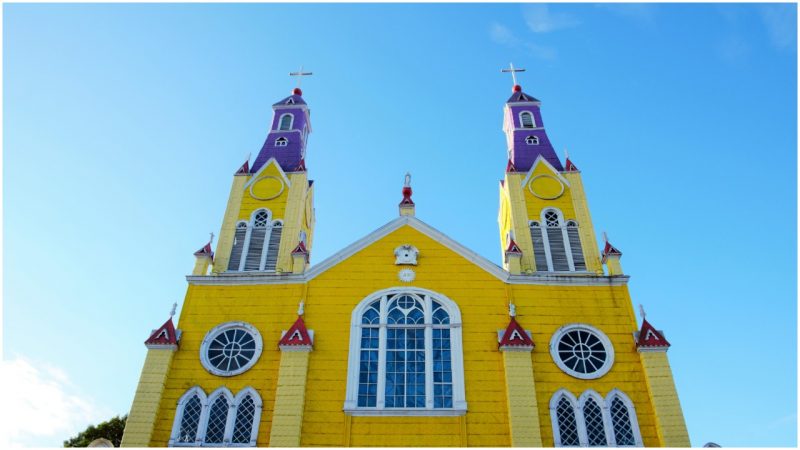The Chiloé Archipelago, situated just off the coast of Chile, is a beautiful, misty, and magical place. These wind-swept islands are home to many plant species that are unique to this part of the world, such as the widest known variety of potatoes.
Many animal and bird species (Humbolt penguins come here on their migratory path and waters are rich with salmon) are seen, some of which can only be found only here. Chiloé is home to the Chono and Huilliche people–the indigenous people who have inhabited these islands for some 7,000 years. Their mythology still resonates across the islands today: Mythical creatures such as the goblin-like Trauco, the mermaid Pincoya, the ghost-ship Caleuche (like the Flying Dutchman) and an abomination called Imbunch are mixed with the beliefs brought by the conquistadors.
When the Spaniards came to Chiloé in the 16th century, they brought with them their Western culture and started a process of assimilation of the native population. One thing that they weren’t able to outmatch were the skills of the Chono and Huilliche, who had learned how to live in harmony with their environment. They were skillful fishermen, but also excellent woodworkers who learned how to use the native trees that the island has in abundance. These people knew how to construct a dwelling that could sustain the harsh and humid oceanic climate of the islands. Even today they are renowned for their Chilotan architecture.
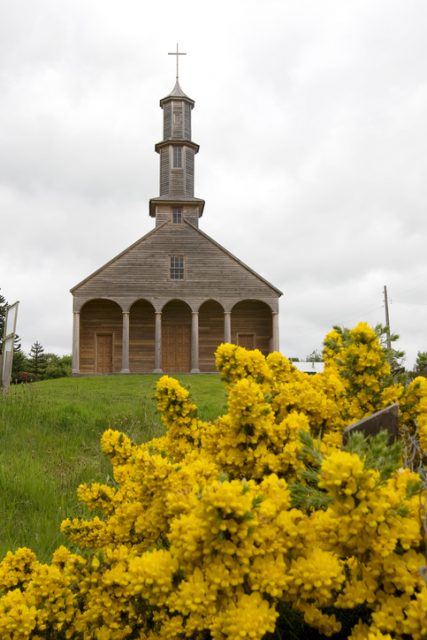
The Jesuits (the Society of Jesus) were founded as a religious order in Spain in the 1530s. They then became the main force for conversion to Christianity in the European colonies across the “New World.” As the main Christianity-spreading force of the Catholic Church, they were sent to the most extreme places on Earth. One such place was Chiloé. Although Mercedarian and Franciscan priests started the process of evangelization on the islands, it was the Jesuits who, with their circular mission (revisiting different places across the islands each year), did the most.
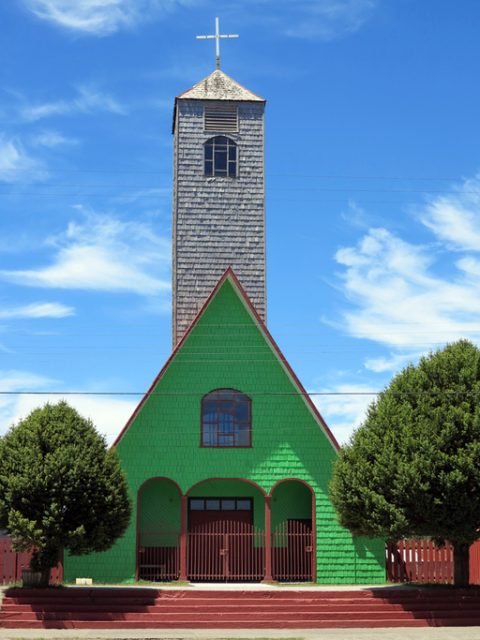
The Spanish Crown had a system of colonizing and assimilating the local culture that meant small villages in European (in this case Spanish) style were built in the places where natives lived. Their old settlements were destroyed, and they were relocated to the new urbanized area. These settlements were called “Indian Reductions” (congregations). In Paraguay, Argentina, Brazil, and Bolivia, in the 17th and 18th centuries, these reductions were organized and led by Jesuit priests. This also happened in Chile, and it resulted in an interesting mixture of indigenous culture and style with the one brought by the colonists. These reductions created the looks of the modern cities and villages.
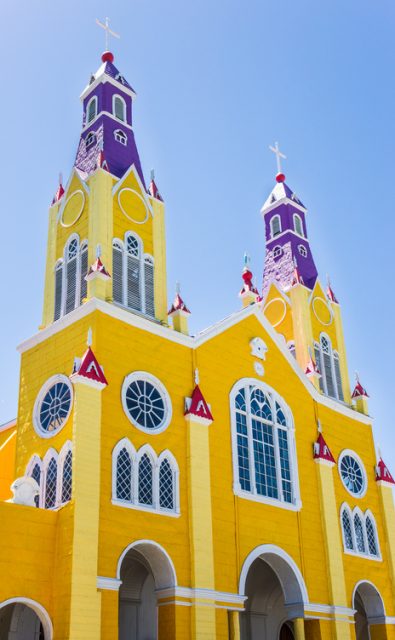
On Chiloé, the Jesuits wanted a more permanent presence and therefore they started building a series of small churches around the island, mostly scattered around the congregation of Castro (the modern-day fishing village of Castro). The places that got a church were the villages of Quinchao, Chonchi, and Cailin. But these were not ordinary churches designed in the typical Spanish style of the time–they were made entirely of the native Chiloé wood.
Since 2000, UNESCO declared the churches of Chiloé as World Heritage Sites. The Chiloé heritage churches, which are part of the Chiloé religious architecture in wood, stand out from any other church because of their unique blend of the building knowledge of the locals and the European style of the new settlers. The Chiloé architectural school is characterized by the creativity and skillfulness of the carpenters who learned how to work with wood on the seacoast and riverbanks, with a special accent on shipbuilding. The buildings that are made in the Chiloé architectural style posses shipbuilding techniques. The way of assembly, the joints and unions, fixed with wooden dowels that reduce the use of iron nails and fixtures, is one of those techniques.
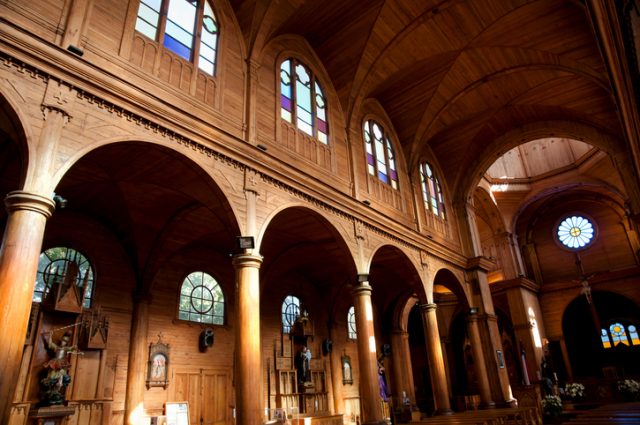
Even today, most of the buildings on Chiloé are made out of wood. One of the trademarks of Chilote architecture (and generally across Patagonia) is the use of roof and facade wooden of shingles made from the endemic and magnificent Alerce tree (Fitzroya cupressoides). The shingles made of Alerce help withstand the rain and wind on the islands, and they’re quite attractive. In the past, the Alerce wooden shingles were even used as currency (Real de Alerce).
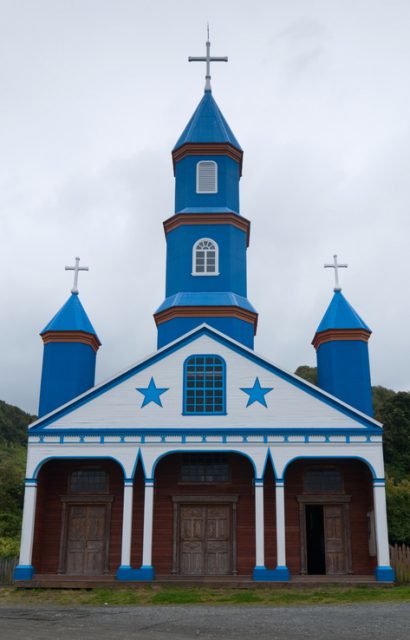
The Chiloé Churches, made of wood, are still proudly standing today. There are some elements that unite all of the 16 World Heritage churches on the islands. The basic form of the Chiloé missionary churches is comprised of a large horizontal volume with a gabled roof assembled with a vertical tower. Their all-wood interiors and ornamentation make everybody who visits them feel welcomed and warm. Their structural model has remained unchanged even after rebuilding or restorations.
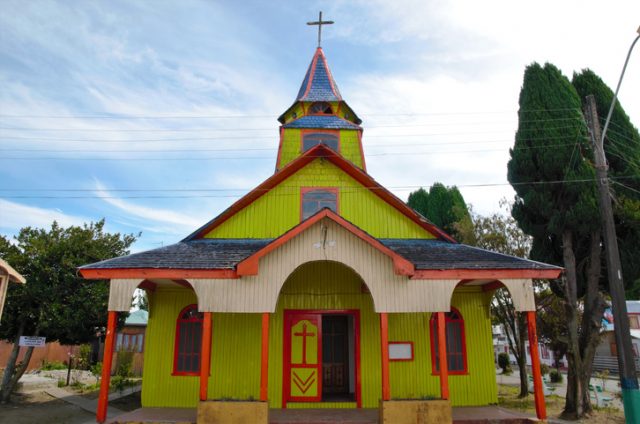
Since the day they were built, the Chiloé Churches have played an important role in the communities. This function continues today. From the very beginning, the Jesuit priests that visited the villages appointed someone from the local indigenous population to take care of the churches in their absence. They have been places for celebration and places of grief. The Church in Castro (San Francisco de Castro) is the most modern of the heritage churches. And it’s a perfect example of the so-called “mestizo” adaptation of European concepts with the specific conditions in Chiloé. The Castro church was the first to be painted on the outside.
While many of the churches remained unpainted, some communities decided to follow Castro’s example and painted their churches too. The Church of Santa María de Loreto in Achao, built around 1740, is one of the oldest churches in Chiloé. It was built by the Jesuits, but its interior is baroque, a style typical of the Franciscans.
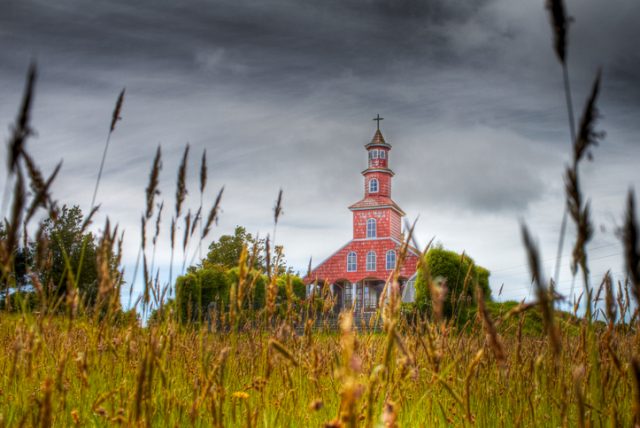
This church is also unique because there are no nails in its structural assembly. Another interesting church is Santiago Apostol in Detif. It is one of the smallest heritage churches. Even today, located on the far south of Lemuy Island, it serves a small community of around 20 houses.
The Chiloé churches, also called “the churches at the end of the world,” still serve their communities, and through their constant restoration, we can be reminded of the woodworking skills of the old carpenters. They are like an open architectural book.
